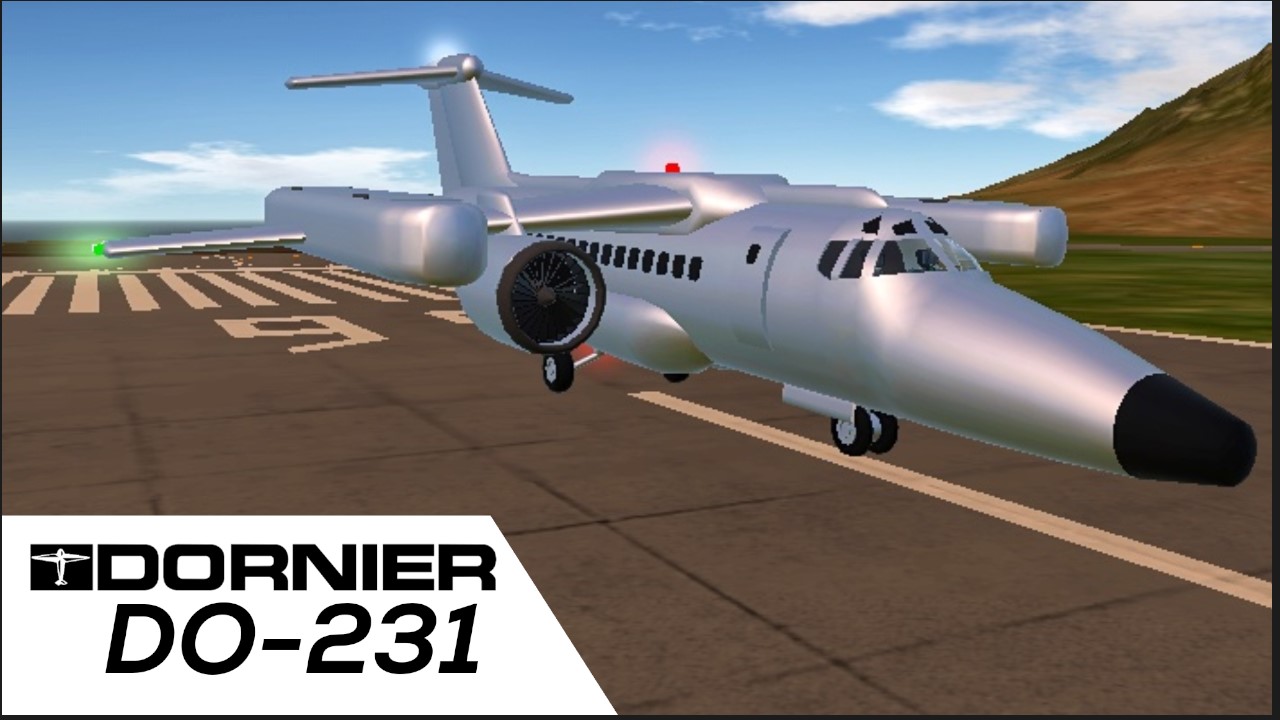Introduction
Dornier reveals VTOL transport project
DETAILED DRAWINGS of the Dornier Do231—one of the three VTOL transport projects announced by German aircraft manufacturers recently (Flight. November 13, page 723)—have now been released. Based on the company's experimental Do31 prototypes, and with similar podded wingmounted lift engines and separate underwing propulsion engines, the Do231 is designed to carry 80 to 100 passengers.
Proposed powerplants are two Rolls-Royce RB.220 advanced technology turbofans of about 23.8701b rated thrust for propulsion, and no fewer than 12 RB.202 lift engines (of 13,050lb approx. rated thrust) which appear to be compact units with a fan diameter almost double their (axial) length. The wing pods each house four of these latter units, and pairs of additional RB.202s are mounted in the nose and rear fuselage.
All the lift engines tilt between 30 forward and 10° aft. This Dornier project and the other two VTOL transport designs, the Messerschmitt-Bolkow-Blohm Bo 140 and the Hamburger Flugzeugbau Division HFB600 Vertibus. have been submitted for a Federal Defence Ministry design competition which calls for an 80/100-seat VTOL civil/military transport available for service in the late 1970s. Both Lufthansa and the Luftwaffe have been called upon to state their requirements for such a design. Eastern Air Lines recently held a V/STOL briefing and the Do231 is one of the designs they have under consideration.
Nose and tail intakes would open respectively just forward of the pilot's windscreen and—intriguingly—on both sides of the base of the fin and rudder. An APU is apparently fitted in the tail cone. Both wing and tailplane of the Do231 have marked anhedral and the wing centre section sweepback is about 28 deg at quarter chord. Outboard of the lift pods the wing sweep is reduced to about 23 deg. The nose and main undercarriage units are all twin-wheel bogies, the main legs retracting into large underfuselage fairings.
The Do231M military version has a tandem mainwheel undercarriage, with bigger tyres, and a deeper rear fuselage with freight loading doors which would open when the lift engines (raised into the roof in this version) were running. Wing span of the Do231 is 85ft 4in (26m); overall length, 118ft 9in (36.2m): and overall height, 31ft 4in (9.55m). Tile wing area is 1.290 sq ft (120 sq m) and aspect ratio 5.63. Both the civil and military versions will have a maximum take-off weight of 129,000lb and will carry a payload of about 22,000lb. Cruising speed is 485kt, rate of climb at sea level slightly better than 100ft/min and service ceiling 36,400ft. The wing has double-slotted flaps, ailerons and spoilers, and the centre section is built as an integral tank with capacity for nearly 30,000lb of fuel. An alternative STOL version of the Do231 with six to eight lift engines would span 103ft 4in.
More information about the project below:
The project of this VTOL passenger aircraft for 100 seats was developed in Germany by Dornier GmbH in the early 1970s, as a continuation of the concept of a universal transport VTOL aircraft, proposed for the first time in the Do-31 experimental aircraft. The aircraft was submitted to a competition announced by the German ministries of defense and economy for the creation of a short-haul cargo-passenger aircraft. In addition to Do-231, the following participated in the competition: VFW VC-180 (from Focke Wulf), VFW VC-500 (from Heinkel), MBB Bo. 140 and HFB 600 "Vertibus". Do-231 won this competition, but its development was quickly curtailed due to the refusal of the state to finance such an expensive project ...The aircraft is made according to the classical scheme, with a high swept wing and a T-tail. The power plant was supposed to consist of 12 Rb.202 lifting and 2 Rb.220 lifting and marching engines. The thrust of the main engine was 10850 kgf, lifting 5935 kgf. Lifting engines were placed as follows: two in the nose and tail of the fuselage and four in nacelles on the wings. Rb.202 lifting engines had to be made with a high bypass ratio, which would ensure low noise levels and low gas temperatures.2
It was assumed that the aircraft could be used at small airfields right in the city. Fantastic projects reached the ideas of airfields on the roofs, that is, VTOL aircraft became the new urban transport.3
Estimated project data: speed - 900 km / h, ceiling - 10,000 m, range - 700 km, wingspan - 27 m, length - 35 m, maximum take-off weight with GDP - 59,000 kg, with UVP - 66,900 kg, weight payload - 10 tons.4
In addition to the passenger, a variant of the army VTOL Do-231M was also developed, which could carry up to 80 equipped soldiers. In version M, the aircraft had to be equipped with a special ramp in the tail.
Unfortunately the original post has been removed for violating site rules!
This post and the final version the original post previously was DEMO version!
AG1:navigation lights!
VTOL:Activation of VTOL secondary engines!
Main engines default activation!
Next project: HAMBURGUER HFB-600
Specifications
Spotlights
- ShootsPlanes 2.3 years ago
- LIQUIDconsumer 2.3 years ago
- ThatRandomCouchPotato 2.3 years ago
- IMVICTOR 2.2 years ago
- Gabriel747 2.3 years ago
- RepublicOfCursedPlanes 2.3 years ago
- XProAerospaceAircrafts 2.2 years ago
General Characteristics
- Created On Android
- Wingspan 99.8ft (30.4m)
- Length 142.0ft (43.3m)
- Height 39.3ft (12.0m)
- Empty Weight 131,234lbs (59,527kg)
- Loaded Weight 238,988lbs (108,403kg)
Performance
- Power/Weight Ratio 5.66
- Wing Loading 124.8lbs/ft2 (609.4kg/m2)
- Wing Area 1,914.8ft2 (177.9m2)
- Drag Points 67138
Parts
- Number of Parts 358
- Control Surfaces 5
- Performance Cost 1,815







Hey, ive redesigned your plane and ive added a passenger cabin can i upload?
https://youtube.com/shorts/9u5Y0cfr0Z8?feature=share
Let me do it for you
Is that.....
LUFTHANSA?????!1!1!1!1!!1!1?1?1?1?1!1!1?1?1?1??1?1?1!1!1!1!1!